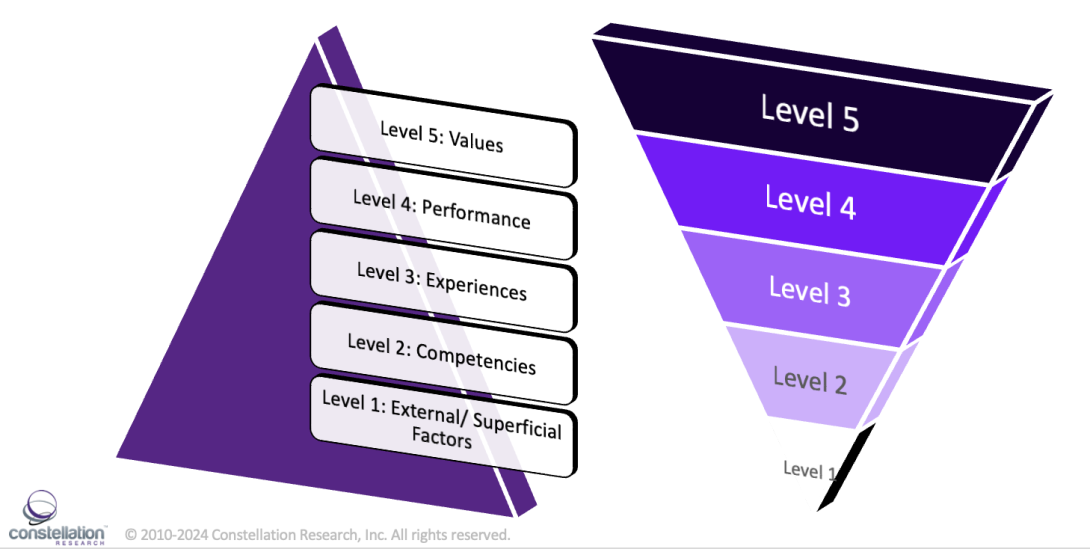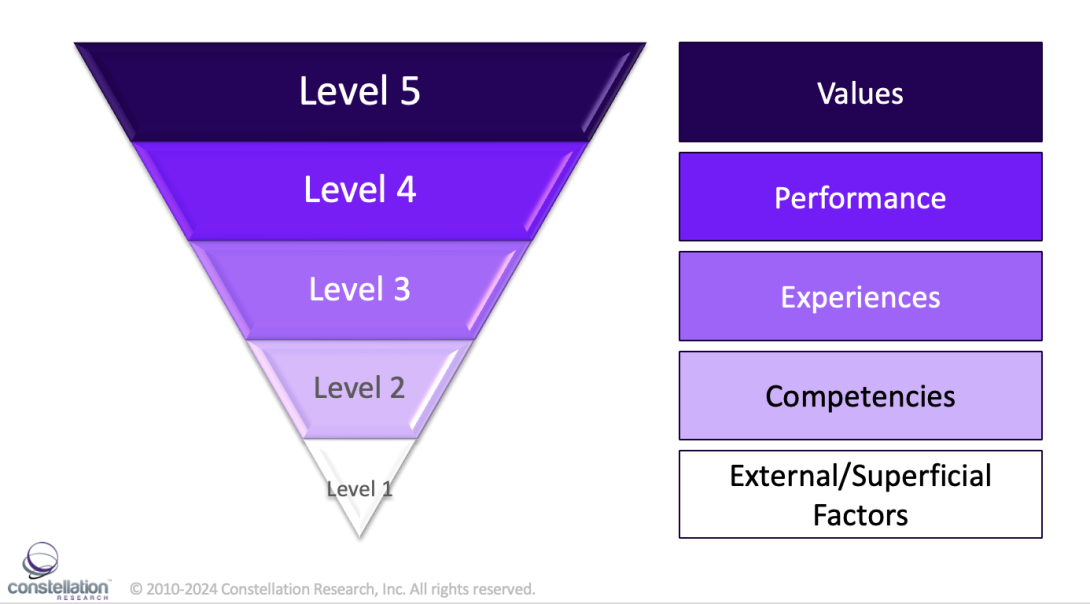

Monday's Musings: How To Deliver On Both Performance And Diversity Amidst The DEI Backlash
The Backlash On DEI Is Based On Lack Of Performance
The recent backlash on diversity, equity, and inclusion (DEI) programs stems from both the lack of quantitative data showing how diverse teams improve performance and the discriminatory nature in how these teams were constructed. In 2015, a "seminal" McKinsey study lauded the dividends to be gained from diversity. The well meaning Davos set used this study to launch a movement for diversity, resulting in hundreds of billions spent on diversity programs across businesses, the public sector, and non-profits over the past decade.
Why? In that 2015 study, McKinsey's researchers focused on superficial diversity metrics of gender, ethnic, and racial makeup of top management teams and boards across a number of industries in 2014. They then took an analysis of EBITDA between 2010 and 2013 and came to the conclusion that businesses with more gender diverse leadership were 15% more likely to report financial returns above their national industry median. Teams with more ethnic diversity were 35% more likely to have financial return that outpaced their industry.
Unfortunately, the amount of investment and efforts have not financially paid off and since 2020, companies have cut back on investment into diversity programs. Furthermore, the landmark McKinsey study has never been replicated and the results are now in question. The backlash has been well documented in a series of media reports:
- July 21, 2023 - The Wall Street Journal - The Rise And Fall Of The Chief Diversity Officer
- January 14, 2024 - The New York Times - This Is The Actual Danger Posed By DEI
- January 17, 2024 - The New York Times - What If Diversity Training Is Doing More Harm Than Good?
- January 20, 2024 - The New York Times - America Is Under Attack - Inside The 'Anti DEI' Crusade
- January 22, 2024 - The New York Times - Facing Backlash, Some Corporate Leaders Go 'Under The Radar' With Diversity Initiatives
- April 12, 2024 - The New York Times - With State Bans On DEI, Some Universities Are Finding A Work Around: Rebranding
- April 21, 2024 - The Wall Street Journal - Diversity Goals Are Disappearing From Companies Annual Reports
- May 13, 2024 - USA Today - University of North Carolina To Dump 'Divisive DEI', Spend Money On Public Safety
- June 24, 2024 - The Wall Street Journal - Banks, Law, and Consulting Firms Are Watering Down Their Diversity Recruiting Programs
- June 28, 2024 - The Wall Street Journal - Diversity Was Supposed To Make Us Rich, Not So Much
- June 30, 2024 - The Wall Street Journal - How Tractor Supply Decided To End DEI and Fast
- July 5, 2024 - The Wall Street Journal - How DEI Became Discrimination
What You Measure Matters In High Performing Diverse Teams
The push back on diversity goals and reduction in investments is a reflection on the lack of promised gains. However, the failure of these programs is based on a fundamental flaw - how diversity was defined and how identity politics failed to address performance from diversity. In fact, diversity was often defined by external factors of gender, ethnic, and racial make up. These attributes of diversity are often out of the control of the individual. One does not choose their gender nor race nor ethnicity. In fact most employees recognized this flaw that addressing diversity based on external factors did not achieve the spirit of diversity
For example, if the goal is to provide more opportunities for disadvantaged youth to attend elite colleges, preferences by race should not be the factor. Why? A very wealthy fourth generation, well connected, and educated child in one racial classification would benefit at the expense of the intent of the policy. Using first time college families would be a better approach to achieving the spirit of providing more opportunities for first time higher education families without using race and achieving diversity.
In the corporate world, diversity of thought provides a key role in accelerating performance. For instance, successful innovation teams with a majority of STEM folks (e.g. engineers, scientists, and mathematicians) know that they need a balance of humanities experts (e.g. ethnographers, sociologists, philosophers, and historians). This balance of perspectives and level of diversity is critical especially with the rise of artificial intelligence and the need to ensure a holistic point of view to address unintended consequences and biases. However, there is an assumption that these members of diverse teams have achieved a level of competency and mastery in their profession, unlike many of the external and superficial definitions of diversity in corporate DEI programs.
Apply The Five Levels Of Diversity When Hiring For Performance
In over 100 conversations with CXO's in the Constellation Executive Network over the past 12 months, a realization that broader measures of diversity can address the performance gap in Level 1 diversity program design. Success will require a flip in the prioritization of diversity from Level 1 external/superficial factors to Level 5 prioritization (see Figure 1)
SUPERFICIAL EXTERNAL FACTORS APPROACH
In many DEI programs today, leaders start with Level 1 as the key filter. This has led to the lack of performance and backlash.
- Level 1 External/Superficial Factors: attributes out of one's control such as race gender, and ethnicity.
- Level 2 Competencies: attributes earned such as hard skills, educational background, and training
- Level 3 Experiences: attributes based on years of experience such as duration in a role, advancement in a profession
- Level 4 Performance: attributes based on success in past roles
- Level 5 Values: attributes based on core principles, values, and beliefs
FLIP THE PYRAMID APPROACH
By flipping the pyramid and starting with Level 5, organizations will improve both diversity and performance:
- Level 5 Values: attributes based on core principles, values, and beliefs
- Level 4 Performance: attributes based on success in past roles
- Level 3 Experiences: attributes based on years of experience such as duration in a role, advancement in a profession
- Level 2 Competencies: attributes earned such as hard skills, educational background, and training
- Level 1 External/Superficial Factors: attributes out of one's control such as race gender, and ethnicity.
Figure 1. The Five Levels Of Performant Diversity

The Bottom Line: Apply A More Comprehensive Approach For Performant Diversity
Achieve performant diversity by starting with Level 5 Values and working through each level in hiring decisions and performance evaluations. Move from Level 5 to Level 1 as one measures diversity among all five attributes. Track patterns of performance and deficiency to understand how to align diversity with financial objectives, innovation goals, and regulatory requirements
Your POV
How are you achieving high performance teams with diversity? What are you doing to improve opportunities?
Add your comments to the blog or reach me via email: R (at) ConstellationR (dot) com or R (at) SoftwareInsider (dot) org. Please let us know if you need help with your strategy efforts. Here’s how we can assist:
- Developing your metaverse and digital business strategy
- Connecting with other pioneers
- Sharing best practices
- Vendor selection
- Implementation partner selection
- Providing contract negotiations and software licensing support
- Demystifying software licensing
Reprints can be purchased through Constellation Research, Inc. To request official reprints in PDF format, please contact Sales.
Disclosures
Although we work closely with many mega software vendors, we want you to trust us. For the full disclosure policy,stay tuned for the full client list on the Constellation Research website. * Not responsible for any factual errors or omissions. However, happy to correct any errors upon email receipt.
Constellation Research recommends that readers consult a stock professional for their investment guidance. Investors should understand the potential conflicts of interest analysts might face. Constellation does not underwrite or own the securities of the companies the analysts cover. Analysts themselves sometimes own stocks in the companies they cover—either directly or indirectly, such as through employee stock-purchase pools in which they and their colleagues participate. As a general matter, investors should not rely solely on an analyst’s recommendation when deciding whether to buy, hold, or sell a stock. Instead, they should also do their own research—such as reading the prospectus for new companies or for public companies, the quarterly and annual reports filed with the SEC—to confirm whether a particular investment is appropriate for them in light of their individual financial circumstances.
Copyright © 2001 – 2024 R Wang and Insider Associates, LLC All rights reserved.
Contact the Sales team to purchase this report on a a la carte basis or join the Constellation Executive Network
 R "Ray" Wang
R "Ray" Wang R "Ray" Wang
R "Ray" Wang